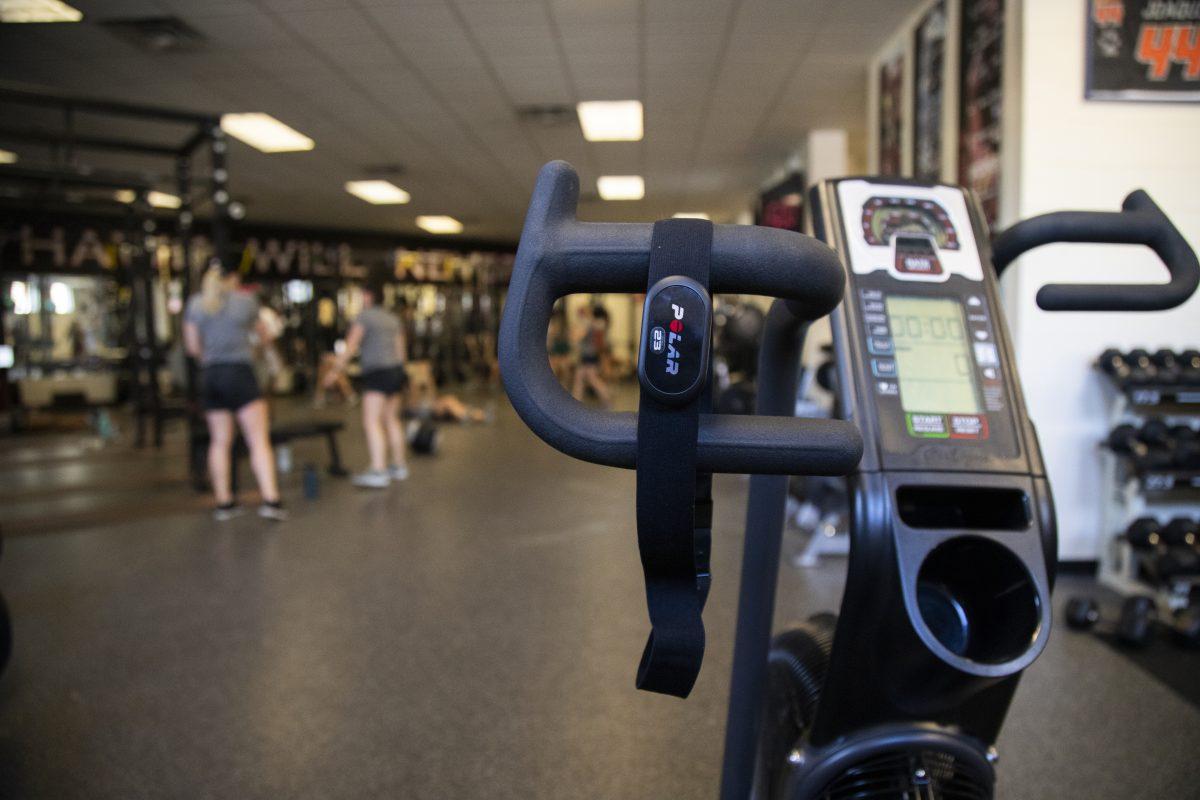Beginning in the 2019-’20 preseason, the softball team became the sixth team in St. Joe’s athletics to implement the Polar heart rate monitor and System into their strength and training routines.
Polar heart rate monitors are an external devices which athletes can wear during training and practice. The data is collected during activity and can be monitored in real-time through an iPad application, allowing athletes, coaches and trainers to not only make effective adjustments during training, but also create long-term strength goals for athletes.
Senior infielder Molly Kapala, said the softball team is spending this semester wearing the heart rate monitors twice a week during their lifting and conditioning sessions.
The monitors will be introduced to their regular practices next semester. Though the team has not yet used the monitors during practice, Kapala said her team has already been noticing positive changes.
“[It tracks] who needs to kind of put a little bit more in,” Kapala said. “So it’s kind of like no hiding behind it. You have to work hard. They see if you’re working or not.”
Each athlete has their own monitor, and information is calculated based on the athlete’s height, age and weight. During activity, coaches and trainers can see the names of each athlete on the application and track their progress. Kapala said the heart rate monitors have been especially helpful for sports that do not require as much running, as they can use the data to find new ways every athlete on the team can become stronger.
“It’s kind of hard to gauge what kind of training and condition[ing] we need to do because we are really different by [each] position,” Kapala said.” I think being able to tailor the workouts and find specific things that we can do to get more physically fit within our sport help[s] us a lot.”
Brian Bingaman, director of strength and conditioning, said the monitors were first used at St. Joe’s five years ago after the men’s basketball team’s Atlantic 10 tournament victory.
Initially, the monitors were only used for the men’s basketball team, before slowly being implemented into the training regimens of other St. Joe’s sports.
“[There] was a trickle down effect and now we have it for [six] different teams,” Bingaman said. “Now, men and women’s basketball, men and women’s soccer, field hockey and softball are using the heart rate monitors in their training and conditioning.”
Bingaman said the heart rate monitors are a reliable tool for coaches and trainers, as the data collected can be used in a variety of ways.
Coaches and trainers can use the data from their athletes to customize workouts, track injury recover and see the amount of calories burned during a given activity.
Eric Lang, head coach of strength and conditioning for St. Joe’s men’s basketball team, said the data that is collected is easily accessible and interpretable. The heart monitors are used daily with the men’s basketball team and are crucial to how they structure practices and workouts.
“We have an actual physical number to associate with how much work they’re doing,” Lang said.
The St. Joe’s athletics strength and conditioning staff work collaboratively with athletes and coaches to make sure there are no areas of weakness on a team.
“We may do extra conditioning sessions for some athletes that aren’t getting enough player load,” Bingaman said. “We look at all the numbers and we have conversations with the coaches and we try to find, essentially, the sweet spot of what our player load is, so we’re not doing too much.”
Kapala said she and her team are enjoying the heart rate monitors and are excited to continue to use and incorporate them into their practices and games over the next few semesters.
“They’re really comfortable,” Kapala said. “People forget to take them off sometimes. They’re not weird. You won’t even notice they’re on, they’re really good.”














































